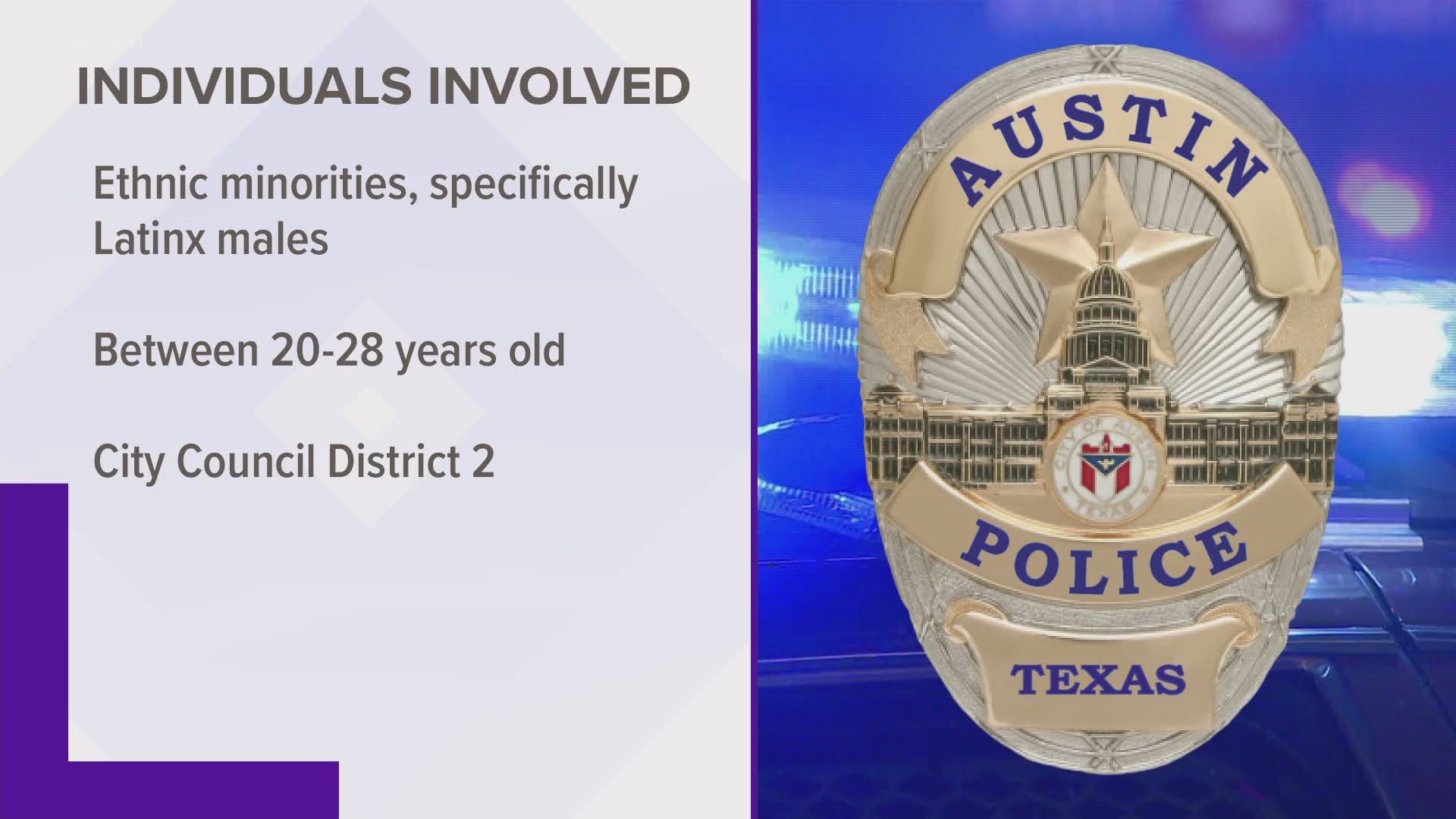AUSTIN, Texas — The Office of Police Oversight (OPO) on Wednesday released its report into Austin’s 12 officer-involved shootings in 2018.
The report found APD officers failed to use de-escalation tactics in many of the incidents and used “less-lethal” force before firearms in only one incident.
It also concluded a disparate concentration of officer-involved shootings in 2018 affected individuals who are ethnic minorities, specifically Latinx males, as well as areas of Austin that are historically minority-majority.
The highest concentration of officer-involved shootings occurred in City Council District 2, the borders of which closely mirror those of APD’s Frank sector, the OPO said. District 2 and the Frank sector cover southeast Austin.
Most individuals involved in 2018 officer-involved shooting incidents were between 20-28 years old, the report found.
RELATED:
Data showed almost half of all involved officers had between three and six years of APD experience, and more than half of all involved officers were between 30-39 years old.
“The report concludes that the 2018 officer-involved shootings highlight many issues that APD must acknowledge and address to provide transparency and accountability to the community,” the OPO said. “Specifically, officers’ failure to use de-escalation tactics in many of the incidents, and failure to use ‘less-lethal’ force options in all but one incident, require further explanation from APD.”
The OPO said APD must account for the demographic and geographic disparities.
RELATED:
It recommends APD increase continuing education in de-escalation, response to resistance, crisis intervention, mental health response and community policing.
The OPO is asking APD to publish annual reports related to any officer-involved shootings and increase access to incident data. The report also urges APD to ensure mental health response training, policies and procedures, and address shortcomings found in the 2018 City Auditor report.
“In the most significant way, officer-involved shootings represent the power that law enforcement officers have over the lives of the civilians they serve,” said OPO director Farah Muscadin. “As a result, both OPO and APD must critically analyze each officer-involved shooting incident that occurs and must also look at the aggregate data to determine what substantive policy changes can be made to address any recurring issues.”
The OPO is not a part of the APD. It is staffed by civilian, non-police employees and works to enhance accountability and transparency.
PEOPLE ARE ALSO READING:

